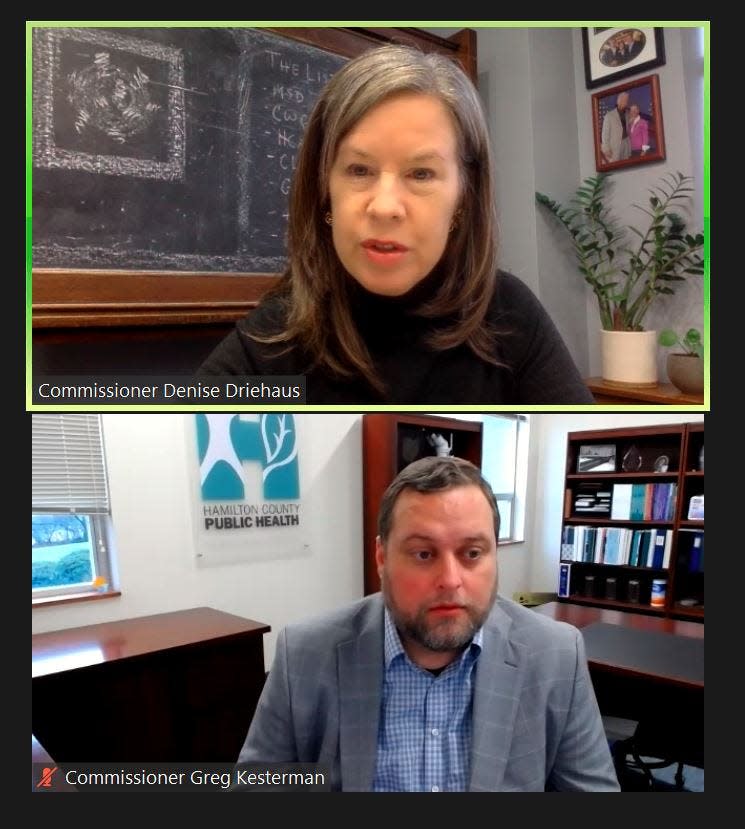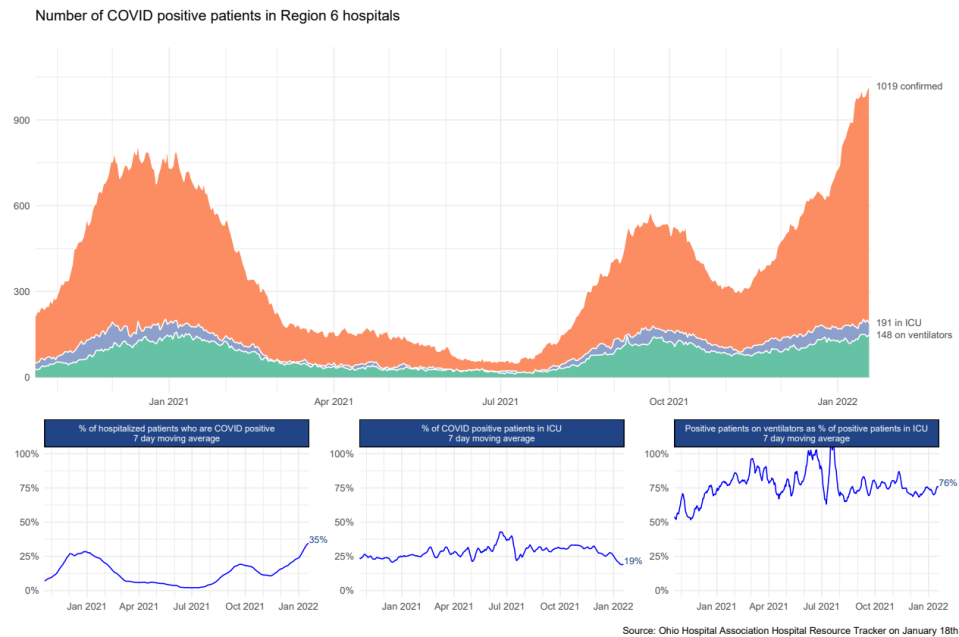Cincinnati Children's CEO: Omicron spurred 'eight-fold' rise in hospitalizations of kids
The spread of the omicron variant locally is causing a larger number of infections and hospitalizations among children, the president and chief executive officer of Cincinnati Children's Hospital Medical Center said Wednesday.
The insight came as health and political leaders cautioned while COVID-19 cases have peaked or plateaued elsewhere in Ohio and in some parts of the nation, they are still rising locally.
While other waves of COVID-19 have affected employees of Cincinnati Children's in line with the community spread, children haven't been impacted quite as much, Dr. Steve Davis, president and chief executive officer of the hospital said Wednesday during Hamilton County's weekly COVID-19 news conference.
COVID at home: What do I need, doc? Tips on self-care
Omicron and masks: N95, KN 95 or surgical? Local doctors give advice
COVID and schools: Up-to-date list of building and district closures
The latest wave spurred by the omicron variant, however, has changed that dynamic.
"We are seeing a bit of a difference with omicron and we are seeing a large number of kids be infected similar to our adults," Davis said. "...We're now seeing many more children in the hospital with this wave than we've seen at any point in time during the pandemic."
The surge in pediatric hospitalizations has happened over the past few weeks, Davis said. During the first week of December, Cincinnati Children's had fewer than 10 kids hospitalized with COVID-19. But that number grew to 60 over the last week. Davis said executives from children's hospitals across the state have reported similar increases throughout the latest surge, though other areas are starting to feel some relief.
Some hospitals in the region range from taking care of 100 to 250 COVID-19 patients. Cincinnati Children's is treating 60 kids is comparable to the rate of adult hospitalizations when you look at the population of children versus adults, Davis said.
"It's pretty similar," he said. "...Our number has really gone up eight-fold since early December. So this wave is different and its impact on kids."

Davis' report comes as Cincinnati Public Schools plans to welcome 36,000 students back to in-person learning next week. It's a move the hospital executive agrees with, arguing even though his hospital is being affected by the surge, the impact on kids' education and mental health has caused children to be "stressed now more than ever."
"I think the timing is right for them to be back in schools," Davis said. "It's a challenge for kids not to be in school and they've been really impacted throughout this time period."
He said if kids who are eligible become vaccinated and masks are worn indoors, the "balance of risk is better for them to be in school than it is for them to not."
Tim Ackermann, assistant superintendent of business operations with the Hamilton County Educational Service Center, said the increase in positive cases among students, teachers, and staff has caused a perfect storm for issues at schools, adding that 40% of substitute requests are not being filled each day due to shortages across the board.
"We've seen a lot of positive cases for staff and students in our schools since the holiday break," he said. "There's an extreme shortage of substitutes not only for teachers but for bus drivers, mechanics, food service, you name it, there's an extreme shortage right now in the area."

The region's hospitals continue to face stress as COVID-19 hospitalizations continue to climb upward. As of Wednesday, 1,019 patients have been hospitalized with COVID-19, 191 individuals are in the intensive care unit and 148 people are on ventilators. Thirty more people died from the virus since last week.
"Our systems are busy," Health Commissioner Greg Kesterman added.
The concern over hospitalizations and the increased infection in children remains as the region hasn't faced its peak as is the case in the Cleveland area or even a plateau as Columbus is reporting. All indications show Cincinnati's spread is still on the rise.
"Cleveland's numbers are actually starting to go down right now. Franklin County is plateauing, still in a danger zone, but plateauing," Commissioner Denise Driehaus said at the conference. "But Hamilton County and Cincinnati are still going up and still going up significantly. So we've got a little ways to go here ...I do want to emphasize that we are certainly not out of the woods."
What's happening with infections?
The positivity rate for new COVID-19 tests in the Cincinnati region remains at 33.7% or roughly 1 in 3, according to the Health Collaborative Situational Dashboard.
The rate at which the novel coronavirus is reproducing locally indicates there is community spread of the virus.
The situational dashboard reports the R naught, a value that measures spread, for the region and individual areas of it for the last seven days. Tuesday's reading for the region was 1.28, according to the situational dashboard. In Hamilton County, it was 1.24. Any reading over 1 indicates community spread of the virus.
What's the local toll since the COVID-19 pandemic started?
A total of 4,724 residents of the 16-county region have been reported as dying of COVID-19, an Enquirer analysis shows. A total of 466,087 cases of the illness have been reported. That number may not reflect the full picture because some people have had the disease more than once – and an untold number of infections aren't in the total because they were discovered by people using in-home tests and were not reported to health officials.
This article originally appeared on Cincinnati Enquirer: Hospitalizations among children up during omicron surge COVID 19

